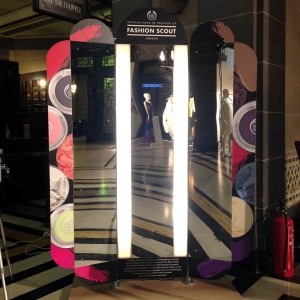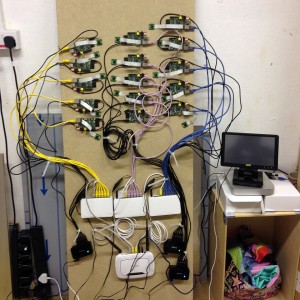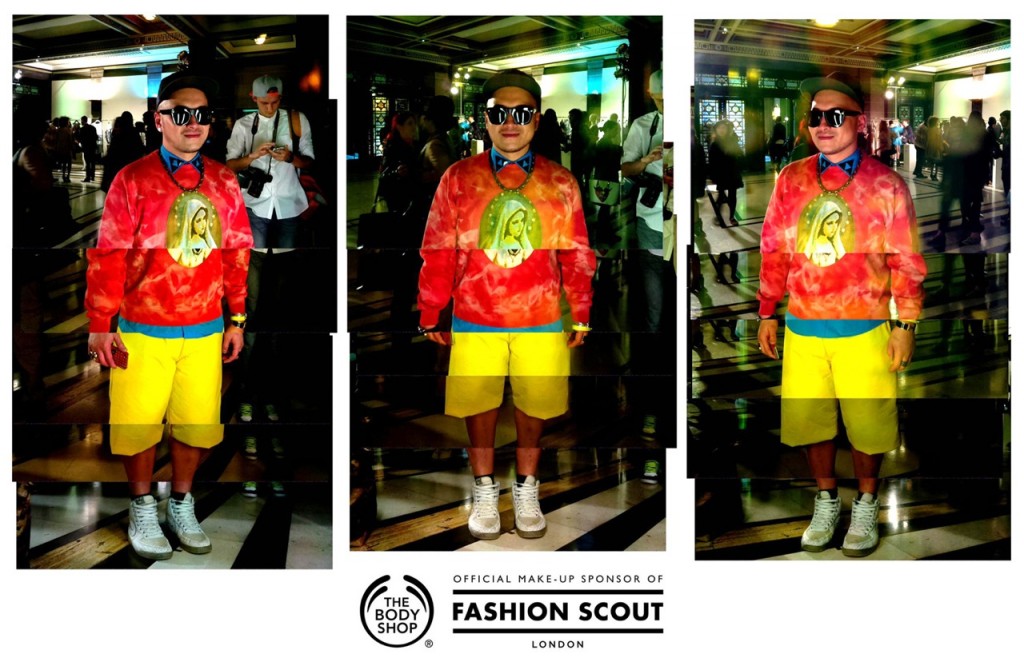|
Welcome to another exiting edition of the Good e-Reader Radio Show! Today I fly solo and regale you all with tales of Barnes and Noble eBook News and a new Nook Tablet! Also, likely the biggest Blackberry firmware update of the year is getting closer to release, I tell you all about the new found freedom to load in APK files directly and have them magically work! Also, why is Black Friday poised to be tremendously underwhelming? Listen and find out! Good e-Reader Radio – Major Blackberry News, Nook Tablet Revealed and More! is a post from: E-Reader News |
A Semi-automated Technology Roundup Provided by Linebaugh Public Library IT Staff | techblog.linebaugh.org
Monday, November 25, 2013
Good e-Reader Radio – Major Blackberry News, Nook Tablet Revealed and More!
Readmill, Penguin Partner on Direct Buy eBooks
|
In a move that more and more publishers are considering, however, Penguin will begin selling its titles in ebook directly to customers, in this case through Readmill, which has created a Send to Readmill button for consumers to click from the Penguin website. This feature encourages readers to not only utilize the Readmill social reading platform, but also encourages readers to do something that publishers have found difficult: turn to their branded websites for book purchasing. Readmill co-founder and CEO Henrik Berggren was quoted about the partnership as saying: “We’re thrilled to make Penguin’s e-book catalogue available for iOS mobile and tablet users to discover, share and read in the Readmill app.” Readmill only launched its iPhone app in February of this year, but has already established partnerships with eighty different publishers who are looking to working directly with their readers as they bypass typical ebook distribution outlets like Amazon or Barnes and Noble.
Readmill, Penguin Partner on Direct Buy eBooks is a post from: E-Reader News |
New Barnes and Noble Nook Tablet Revealed
|
Barnes and Noble is working on a next generation Nook Tablet that has the model number BNTV800. The device was posted on a benchmarking website, which is the same one used by Amazon a few weeks before they announced their latest line of HDX tablets. The new Nook Tablet is running on the companies skinned version of Android, but this time it has a modern iteration of the OS with 4.2.2. Even more importantly, there seems to be a quad-core 1.8 GHz Nvidia Tegra 4 CPU beneath the hood, which is a significant step up from the Nook HD and HD+ released last year. The 7-inch Nook HD came packing a modest and now no longer in production dual-core 1.3 GHz TI OMAP 4470 SoC, and the 9-inch HD+ touted the same mediocre chip, only running at a slightly higher 1.5 GHz clock speed. The only other notable tidbit to come out of the benchmark, is the resolution of 1,620 x 1,008. Likely this will be a seven inch tablet, with a larger one in production, but nothing is known about it yet. If Barnes and Noble intends on getting this out the door by the holiday season, they are under the gun. They still have not filed FCC certification which leads me to believe that they will release it sometime before Mothers Day. New Barnes and Noble Nook Tablet Revealed is a post from: E-Reader News |
Audible Picks up Thousands of Audiobooks from AudioGO
|
Last month the UK arm of AudioGO went into administration, which is a fancy way of saying it is officially bankrupt. The assets are being sold off to eliminate the debt and to monetize their audiobook catalog. Audible has announced that they have purchased 5,000 audio editions from the now defunct company. AudioGO, formerly known as BBC Audiobooks, “owned about 10,000 audiobooks published by the broadcaster, including works by Graham Greene, Arthur Conan Doyle and J.K. Rowling,” Licensing rights for the titles will transfer to Audible in February, pending approval from affected authors and publishers.Mark Shaw, partner of accountancy firm BDO and a joint administrator for AudioGO, said: “This will ensure continued access to a large portion of the AudioGO library for the consumer, and continuity of royalty payments to authors and publishers." Audible Picks up Thousands of Audiobooks from AudioGO is a post from: E-Reader News |
Barnes and Noble Expands into 32 Countries
|
The Barnes and Noble Nook has never enjoyed the popularity of the Kindle, chiefly because of the limited market penetration. For the most part their hardware and software ecosystem were only marketed to the US and UK. The tides of change are in the air as B&N has announced today that their Nook App for Windows 8 is expanding into 32 countries and 21 languages with customized local market storefronts. What exact countries are targeted with localized storefronts? Australia, Belgium, Canada, France, Germany, Italy, Netherlands, Spain, Switzerland, United Kingdom and the United States. The app supports streaming and shopping and has the ability to import ePub and PDF files from My PC and SkyDrive and have them appear in the Nook library. The expanded presence on Windows is directly attributed to the $300 million Microsoft invested into Nook Media in March 2012. The Redmond based company now owns 17% of Barnes and Noble’s entire Nook division, which includes e-Readers, tablets and eBooks. Barnes and Noble has always wanted to expand into foreign markets to better compete with Amazon and Kobo. The one thing that held them back were the sheer costs of localizing content, working out new publisher agreements and setting up a distribution network. It seems with the recent Windows 8.1 app update that Microsoft took up the challenge and actually paid them for the privilege. Barnes and Noble Expands into 32 Countries is a post from: E-Reader News |
Barefoot Books, Made in Me Team Up to Produce Children’s App Books
|
Tessa Strickland, Co-Founder & Editor-in-Chief at Barefoot Books said in a press release, "We've said 'no' to many app developers, but when we met Made in Me we felt confident that this dynamic, independent start-up business shared our brand values and would make a fantastic partner for us as we celebrate our twentieth anniversary by making some of our best-loved stories available in the app store. We were also thrilled to have another reason to work with Giraffe, as we've had a lot of fun working on previous collaborations with this company." James Huggins, MD Made in Me added, "Barefoot Books have an incredible reputation as an independent publisher who have made a name for themselves all over the world with their outstanding children’s books. Marrying commercial and creative success is not easy and so working with a partner passionate about both is a dream scenario." In addition to working together to globally release the digital versions of the Barefoot Books catalog, the partnership also teamed up with family-friendly restaurant chain Giraffe to include features such as social reading and in-store promotions while users access their tablet-based enhanced ebooks while on the restaurants’ wifi networks.
Barefoot Books, Made in Me Team Up to Produce Children’s App Books is a post from: E-Reader News |
StoriesAlive Subscription App Book Service from Auryn Releases for Kids
|
"We believe in the power of stories as a vital part of child development," said Umesh Shukla, founder and CEO of Auryn, Inc., in a press release on the launch. "That's why we have partnered with renowned and award-winning children's book authors to create a go-to digital library of amazing story apps. All StoriesAlive titles present an engaging and visually captivating experience to encourage children's innate sense of curiosity and to ignite their imagination. It is a fantastic bonus that the stories are also designed to encourage reading and comprehension." Some of these titles–which include voice over narration, soothing watercolor-like illustrations, recordable hot spots within the story for adding personalized sound effects, vocabulary enhancement, and more–have been penned by the most beloved children’s authors, including writers such as Suse MacDonald, Don Freeman, and Dean Koontz. One additional feature of the StoriesAlive app that is not being replicated widely is the ability to turn young readers into emerging authors, bridging the reading and writing skills much in the same way that educators have been seeking from juvenile material. The MyStory feature is included with the subscription and offers users a set of workbooks to create and record their own stories within the app. The StoriesAlive app is free to download and includes six free stories to launch readers’ libraries. Additional stories are made available weekly to add to users’ enjoyment of the subscription.
StoriesAlive Subscription App Book Service from Auryn Releases for Kids is a post from: E-Reader News |
Rumor: Amazon to Release Premium Kindle Paperwhite with 300ppi Screen and Updated Design
| TechCrunch has posted an article about a new Kindle Paperwhite that they have supposedly seen and that is supposedly going to be released early in the second quarter of 2014. Given the fact that Amazon just released the Paperwhite 2, I have my doubts about the story, but then again someone at TechCrunch seems to […] |
URL: http://feeds.the-ebook-reader.com/~r/feedburner/cmWU/~3/jvtkZsuznPc/
Twitter-triggered photobooth
| A guest post today: I’m just off a plane and can barely string a sentence together. Thanks so much to all the progressive maths teachers we met at the Wolfram conference in ew York this week; we’re looking forward to finding out what your pupils do with Mathematica from now on! Over to Adam Kemény, from photobot.co in Hove, where he spends the day making robotic photobooths. This summer Photobot.Co Ltd built what we believe to be the world's first Twitter-triggered photobooth. Its first outing, at London Fashion Week for The Body Shop, allowed the fashion world to create unique portraits of themselves which were then delivered straight to their own mobile devices. In February we took our talking robotic photobooth, Photobot, to London Fashion Week for The Body Shop to use to entertain the media and VIPs. We saw that almost every photostrip that Photobot printed was quickly snapped with smartphones before being shared to twitter and facebook and that resonated with an idea we'd had for a photobooth that used twitter as a trigger, rather than buttons or coins. When The Body Shop approached us to create something new and fun for September's Fashion Week we pitched a 'Magic Mirror' photobooth concept that would allow a Fashion Week attendee to quickly share their personal style. By simply sending a tweet to the booth's twitter account the Magic Mirror would respond by greeting them via a hidden display before taking their photo. The resulting image would then be tweeted back to them as well as being shared to a curated gallery. Exploring the concept a little further led us to realise that space constraints would mean that in order to capture a full length portrait we'd need to look at a multi-camera setup. We decided to take inspiration from the fragmented portrait concept that Kevin Meredith (aka Lomokev) developed for his work in Brighton Source magazine – and began experimenting with an increasing number of cameras. Raspberry Pi's, with their camera module, soon emerged as a good candidate for the cameras due to their image quality, ease of networked control and price. We decided to give the booth a more impactful presence by growing it into a winged dressing mirror with three panels. This angled arrangement would allow the subject to see themselves from several perspectives at once and, as each mirrored panel would contain a five camera array, they'd be photographed by a total of 15 RPi cameras simultaneously. The booth would then composite the 15 photographs into one stylised portrait before tweeting it back to the subject. As The Body Shop was using the Magic Mirror to promote a new range of makeup called Colour Crush, graphics on the booth asked the question "What is the main #colour that you are wearing today?". When a Fashion Week attendee replied to this question (via Twitter) the Magic Mirror would be triggered. Our software scanned tweets to the booth for a mention of any of a hundred colours and send a personalised reply tweet based on what colour the attendee was wearing. For example, attendees tweeting that they wore the colour 'black' would have their photos taken before receiving a tweet from the booth that said "Pucker up for a Moonlight Kiss mwah! Love, @TheBodyShopUK #ColourCrush" along with their composited portrait. The Magic Mirror was a challenge to build, mainly due to the complications of getting so many tiny cameras to align in a useful way, but our wonderful developer created a GUI interface that allowed far easier configuration of the 15 photos onto the composited final image, saving the day and my sanity. The booth was a hit and we're always on the look out for other creative uses for the booth so would welcome any contact from potential collaborators or clients.
|
Quinton’s geeky holiday device buying guide (Part 1)
| Last year I wrote a post where I recommended some solid devices for the holidays, so I figured I'd chime in again this year. It's an exciting time to be a geek like me, as technology continues to move along at a breakneck speed. Did you know you can now read eBooks and listen to audiobooks on your refrigerator or washing machine? I mean, why not?
I'm going to focus on slightly more practical devices that are perfect for everyday use—specifically tablets. They all work great with OverDrive products, and are pretty versatile to boot. In the not too distant future, my esteemed colleague, Anders Brooks, will write another post that will cover a little more, including E Ink readers.
Let's get started with Part 1, shall we? Part 2 is coming soon!
Nexus 7 (2013 edition)
The iPad mini with retina display (which Anders will talk more about in his post) starts at $399, and has a 326 ppi screen. That's a great screen, but the 3 ppi difference between that and the new Nexus 7 (323 ppi) is imperceptible to the human eye. Though the iPad mini is a bit faster than the Nexus 7, it's $160 more expensive, and the speed difference in everyday tasks is negligible.
My wife just got one of these tablets, and she loves it because it’s easy to use, fast, and great for reading. In fact, the screen is fantastic for reading. The sharper the image, the less your eyes have to work to focus on it, and with such a high ppi, the Nexus 7 is practically built for eBooks.
Because the Nexus 7 is also slim and light, it's also very portable. For me, that means it's great for audiobooks too. It's no big deal to take the Nexus 7 on a trip, plug it into the stereo, and use it for navigation while listening to a good book.
It's this value for money attribute that makes the Nexus 7 my top pick in tablets for the holidays.
Nvidia Tegra Note
The screen isn't as good as the Nexus 7 (7" at 1280 x 800 for 216 ppi), but it's not horrible. It might not be the best out there for reading, but the Note does beat the first and second generation Kindle Fire (202 ppi) and ties the 2nd generation 7" Kindle Fire HD, so it's just not as big a deal as some reviewers are claiming.
The Tegra Note shows an awful lot of promise in testing (which you can read all about on Tom's Hardware). Features like the stylus (supposedly very good) and the device’s raw performance make it a real contender. Heck it's even supposed to have pretty good speakers.
The Note is made out of plastic–Nvidia had to cut corners somewhere along the line to get the price down to $199. Does that mean the Tegra Note is built horribly? I don't know, because I haven't been able to get my hands on one yet, but I can almost guarantee that it's not built as well as an iPad or Nexus 7. That doesn't necessarily mean it's a piece of junk. Reviewers seem to think it feels a little cheap, but nobody likes plastic anymore. My advice is to check one out for yourself—they should be in stores soon.
The new Nexus 10?
The original Nexus 10 is great–even if it’s not the most popular. In fact, it was even higher-end than last year's Nexus 7. So, I'm dying to know, what will the newNexus 10 be like? Rumors have pointed to a November launch, so it could be announced any day now. If you prefer the 10" form-factor like I do, my advice is to wait to make your buying decision for a week or two to see what Google might announce.
Quinton Lawman is a Technical Writer on the Knowledge Services Team at OverDrive.
|
URL: http://feedproxy.google.com/~r/OverdrivesDigitalLibraryBlog/~3/0Nwvvgp_XnY/
Outlook Grim for Public Libraries
|
But according to an article for The Bookseller, there were a wide variety of potential solutions offered for many of the key concerns libraries face. The first was to keep concrete data on hand about the wide reach of libraries among their patrons. This data would provide evidence for beleaguered city and town council members to see the effectiveness of libraries in order to hopefully help them continue to vote for funding. The conference cited “ignorance” as one of the chief factors in causing harm to libraries, specifically ignorance of what libraries can offer to their patrons. With many users and politicians remaining unaware of the many ways a library contributes to the public other than just dusty, molded print books, it’s easy to understand why some people don’t feel the call to support libraries. Perhaps the most important factor discussed was ways that libraries can demonstrate their relevance to both the public and the deciding policy makers. Rather than continuing to work in two camps–that of protest and of persuasion–speakers outlined the need for a united front for libraries and encouraged them to rely on demonstrating how vital they are within their communities. This important status comes down to seeking out the patrons who already take full advantage of their libraries and encouraging them to continue, while also reaching out to those members of the community who do not use the library. This outreach can attract more regular visitors by meeting needs that would-be patrons may not be aware of, such as streaming movies, magazine and newspaper downloads, ebook lending, MP3 downloads, and more.
Outlook Grim for Public Libraries is a post from: E-Reader News |
Kindle Paperwhite 2 Jailbreak Hack
| Last week an easy jailbreaking method for the Kindle Paperwhite 2 surfaced over on MobileRead. The script has since been updated and now works as part of the jailbreak package for the Kindle Touch and Kindle Paperwhite 1. The jailbreak is even compatible with the new 5.4.2 software update that Amazon issued early last week, […] |
URL: http://feeds.the-ebook-reader.com/~r/feedburner/cmWU/~3/rhUFnRzXx38/
India Pushes For Legalizing of Photocopying Academic Books
|
The seemingly everlasting tussle between the proponents of digital piracy and those opposing it has taken an interesting turn with the Indian government's move that could legalize copying of textbooks and course materials. There already are reports that claim the Indian government is considering moving a petition before the World Intellectual Property Organization, seeking a change in their legislation in order to legalize copying of study materials on the grounds of helping propagate education among the masses. All of it started when a particular photocopy shop attached to the Delhi University began offering what it calls study packs comprising of photocopied sections taken from books that have been published by Cambridge University Press, Taylor & Francis, and the Oxford University Press. This in turn has prompted the three publishers to file a suit accusing the Rameshwari Photocopy Shop of illegally selling copyrighted material. OUP is contesting the suit, stating that selling the course packs is intended to help make course materials reach a wider section of the population by claiming there is already a legal mechanism as per Indian laws to help such a cause. “The Indian Reprographic Rights Organization (IRRO) offers a legitimate and accessible method for securing permissions, and offers copyright tariffs which are among the lowest in the world — as little as 50 paise per page,” stated OPU sources. The Indian Reprographic Rights Organization issues licenses to institutions enabling them to make photocopies of up to 10 percent of a book, as well as making several copies of the same for use by the students. As of now, the court has imposed a ban on producing such course packs till the matter is sub-judice. The subject is tricky in that such a move–if legalized–will lead to massive losses for the publishers and authors once they are deprived of their royalties. As it is, educational books don’t have much of a profit margin and could be even less lucrative for the authors if the Indian government’s plea is accepted. Chile has made a similar plea, along with at least 33 international academies, as has been specifically named in the suit filed by the publishers. This includes noted Nobel Prize winning economist and author of several titles, Amartya Sen, who has written to OUP to reconsider their stand in the case. “I do recognize that copyright is an important issue, and must be of specific interest to publishers. On the other hand, the use of sections of books for teaching purposes through ‘course packs’ has enormous educational value, particularly because of problems of affordability on the part of the students. As an OUP author I would like to urge my publisher to not draw on the full force of the law to make these ‘course packs’ impossible to generate and use. Educational publishers have to balance various interests, and the cause of education must surely be a very important one,” wrote Amartya Sen in a letter to OUP in September, 2012. The Indian government has earlier enacted a law to “limit abusive patenting practices.” This has not been to the liking of the major pharmaceutical firms but has ensured several life saving medicines such as those used for treating HIV, TB, or cancer to be made available affordably.
India Pushes For Legalizing of Photocopying Academic Books is a post from: E-Reader News |
















